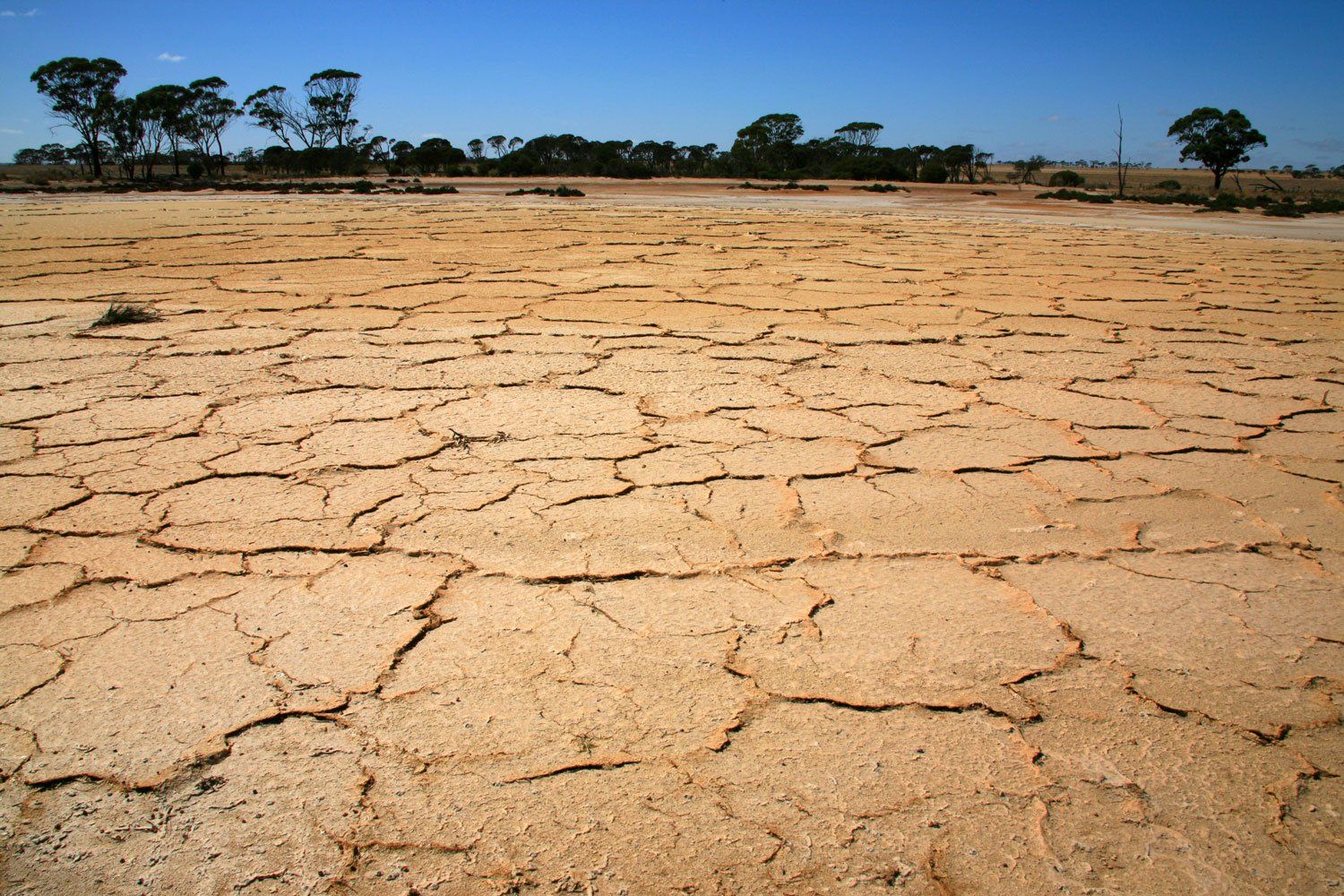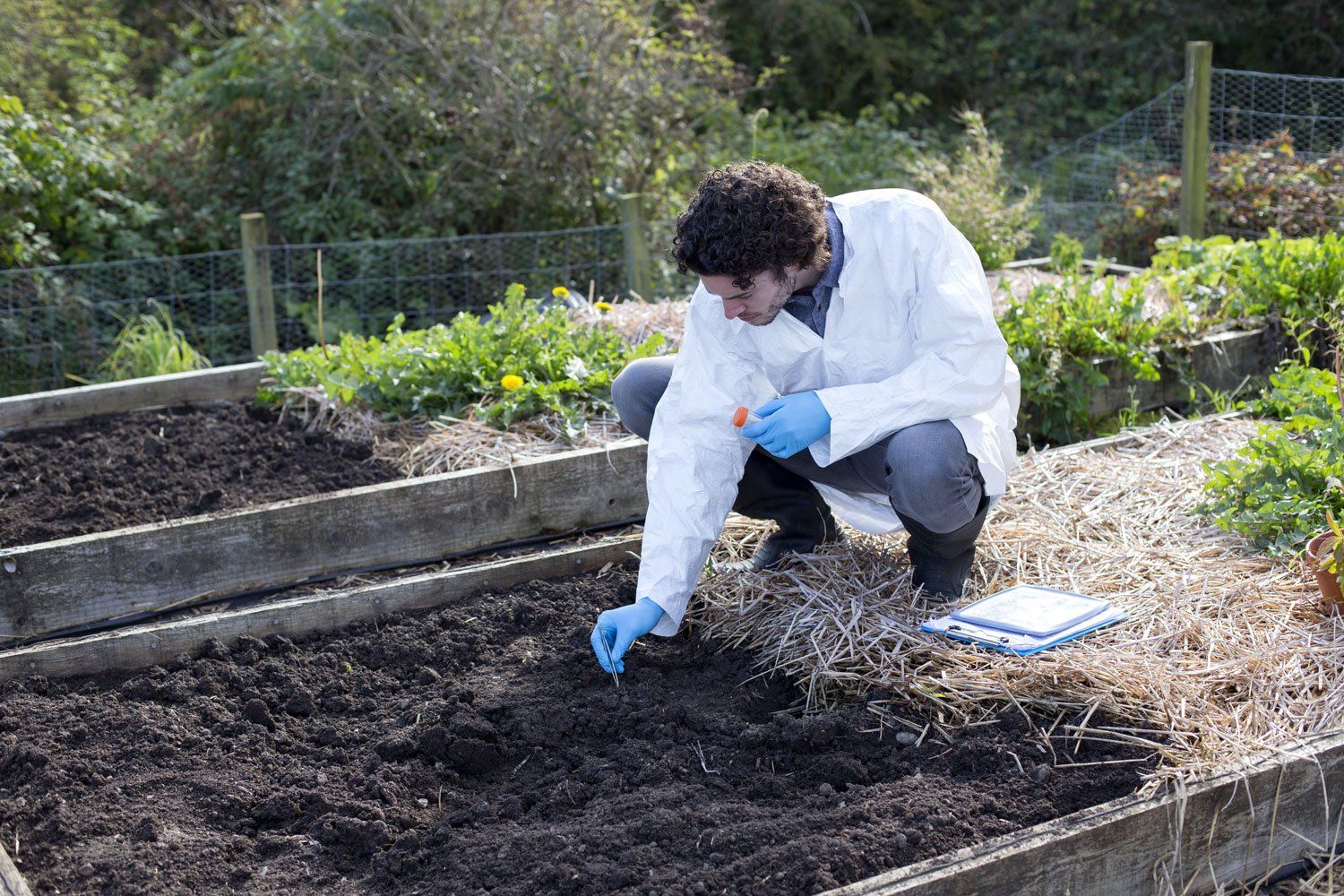1MG FlippingBooks
Cracking the soil debate
Since colonisation, Australian soils have suffered degradation as farmers sought to feed a growing national – and global – population. Walter Jehne asks how we can feed everybody while protecting the very lifeblood of agriculture.

Australia has 770 million hectares and a population of less than 24 million people. But while we may have 20 times more land per person than the global average, what really matters is the capacity of that land to sustain all the needs of each person, not the relative area.
The key question is whether the land and its soils can sustain the essential water, food, clean air and services necessary for human health and survival in the face of increasing climate extremes, finite fossil fuels, demands on water and other resources, land degradation and increasing population pressure and demand.
We must regenerate and sustain the health of our soils and landscapes so they can not only supply these needs, but provide the knowledge and wisdom to help others do it as well. We need to address not only Australia’s current and future food security needs, but to ensure the secure supply of adequate affordable food and the ecological sustainability of how that food is produced.
The Aboriginals’ skilled care of the Australian landscape enabled them to prosper for more than 50,000 years, despite climate extremes and resource limits. By contrast, throughout time most other human civilisations – who were less attuned to ecological limits – failed.
What was the natural condition of our soils that enabled the evolution of Australia’s highly resilient and productive biosystems, despite resource limits and a dry, variable and extreme climate? What have we done to these soils and the processes that governed this resilience and productivity? What must we do to regenerate these or otherwise sustainably secure key soil outcomes?
How do we best do this given our understanding, technological capabilities, and impending crises? Can we best meet our challenge and its desired performance outcomes at minimal risk, through either another engineered high technology green revolution (like that of the Second World War era which saw proliferation of synthetic fertilisers, intensive cropping techniques and expansion of irrigation infrastructure), or the ecological regeneration of the natural processes that govern soil health and outcomes?
To answer these questions we must first recognise the unique aspects of Australia’s soils and landscape.
The driest continent
Relative to most other continents, many of Australia’s soils have developed on very old rocks and marine sediments that have been leached of the essential mineral nutrients needed for plant growth. They are often highly oxidised, weathered, acidic, and have high salt levels.
Furthermore, much of Australia receives relatively low rainfall, with an annual average of just 450 millimetres. In most places, this is variable in both its reliability and intensity, often causing acute floods or droughts. To overcome these constraints, Australia’s soils and the biosystems that evolved and adapted to grow on them evolved sophisticated means to repair, solubilise, access and recycle the often low levels of available soil nutrients. Our soils and biosystems similarly evolved sophisticated means to harvest, infiltrate, retain, efficiently use and recycle all rainfall and moisture to sustain plant growth and maximise drought resilience.
In large part these adaptations were made possible by the evolution and selection of a range of:
1. Unique microbes, particularly fungi that were able to fix, solubilise, access and recycle the limited supply of plant nutrients from these rocks and soils to sustain plant growth.
2. Highly adapted microbes that were able to biodecompose the often sclerophyllous plant debris in situ or in the intestines of herbivores to aid the formation of stable soil carbon.
3. Highly adapted plant species able to form symbioses with these microbes to access these essential nutrients for their growth and increased organic matter production.
This microbial formation of soil carbon has been critical in enhancing the structure, and thus the rainfall infiltration, retention and sustained water supply capacity of soils. These improved soil structures also enhanced the aeration and reduced the hardness of these soils, enabling roots to spread wider and deeper, helping plants to access essential water and nutrients and enhance their resilience.
It is these microbial processes and their resultant high soil carbon levels – and subsequent water and nutrient availabilities – that enabled productive resilient vegetation and herbivores to proliferate across the variable and often arid Australian landscape.
It was these soils and this protective shelterwood vegetation that ensured more than 90 per cent of the low and highly variable rainfall was retained and protected from evaporation in soil reservoirs and flood plains, and not lost out to sea. They enabled Australia’s highly adapted vegetation to efficiently access that water and sustain the longevity of its green growth and resilience despite climate extremes.
What have we done?
This hydrology and sustained green vegetation buffered and moderated our climate, extending weather systems such as the Australian Monsoon across northern and inland regions. So what have we done to our soils and biosystems throughout the past 220 years to change this?
The early colonists were awe-inspired by Australia’s open grassy parklands and the ease with which pastures could be converted into wool and profitable exports back to Europe. But just 50 years of continuous grazing by vast herds of sheep and then cattle changed things considerably.
The metre-high perennial grasslands were turned into thinly grassed plains on compacted dry or bare soil that often eroded down to subsoils, or incised to form more than a million kilometres of creek beds that drained and aridified many former surface wetlands, flood plains and slopes.
In their natural form, these pasture soils often contained up to 20 per cent organic matter. But continued overgrazing oxidised much of this carbon, leading to the structural collapse and erosion of soils, with the residual compacted subsoils now often containing less than 1 per cent organic matter. The residual low grass sheds most of the more variable rainfall, further aridifying extensive biosystems and regions.
With the extension of grain cropping, similar rapid declines in yields occurred. Organic matter levels, soil structures, rainfall retention and nutrient availabilities declined along with a resilience to drought and topsoil loss from wind and water erosion.
Efforts through the early 20th century sought to arrest and reverse this widespread soil degradation and productivity loss in both pasture and cropping systems through the use of fertilisers, clover leys, cover crops, conservation tillage, and soil conservation works. Unfortunately, the resilience and productivity of the residual soils and biosystems still lags far behind their former natural condition.
With the intensification of industrial agriculture since the Second World War, farmers and scientists have learnt how to grow more productive pastures and crops on these degraded subsoils. This has been possible through increased cultivation, fertilisers, biocides, irrigation and the selection of plants and animal systems better adapted to secure yields and economic returns from such higher inputs.
But these ‘engineered green revolution’ approaches have also made these yields and farming systems more dependent on these sustained high inputs and their rising cost. Much of our industrial agriculture now depends on the continued subsidised input of up to ten units of fossil fuel energy for each unit of food energy produced, and is not viable without this subsidy.
More seriously, many of these engineered industrial farming systems continued to seriously degrade soil carbon, structure, water and nutritional processes and values, via their oxidative or toxic effects. In many cases they are effectively mining soils, retaining it as a mineral substrate to support plants by their roots that they have to feed hydroponically via expensive fertiliser, irrigation and biocides.
No consideration is given to the natural capital value of or ecological outputs from the residual soil or the cost of its regeneration, given that it is a finite and critical natural and national strategic asset.
What is the cost?
What cost must we put on this degradation of our former sustainable soils? Is there a better way?
Fortunately there are more effective and sustainable ways to meet all our food and ecosystem services needs, provided we are willing to understand, respect and use the unique processes that nature evolved to enable highly productive and resilient soils and landscapes to prosper despite minimal inputs and dry and a more extreme climate.
We can do this, but only if we restore the unique soil microbiological processes, soil carbon levels, hydrology and nutrient cycles that enabled and underpins our soil health and productive landscapes.
Nature can do it, through its colonisation and maintenance of productive biosystems across the land surface of old leached soils and harsh arid climates. So can we. We can rapidly regenerate the health, hydrology, nutrition, resilience and productivity of the residual soils and landscape by progressively restoring the former high stable carbon levels and structure of these soils.
In so doing we can limit the bushfires that burn and oxidise 30 million hectares of Australia each year, and instead biosequester that carbon into soils. This will restore the natural rainfall infiltration, retention and sustained availability from these soil carbon sponges and in soil reservoirs to enhance the longevity of green plant growth and further carbon fixation.
We can restore the natural availability and recycling of essential plant nutrients, even in soils with limited total pools, so as to further aid plant growth and carbon fixation.
Just as these processes enable rainforests in Australia to grow on sand dunes – a paradox of the world’s most productive terrestrial biosystems growing on soils of minimal nutrient content – so too can we regenerate and sustain productive agro-ecosystems with minimal inputs, while also restoring the health and resilience of our soil.
What should we do?
Innovative farmers across Australia are demonstrating how regenerative land management practices can restore former soil carbon levels. They are regenerating positive feedback benefits via enhanced hydrology, nutrition, longevity of green growth, resilience and still further carbon biosequestration.
These include graziers in all states who enhance yields and capital values and reduce costs and risks by sequestering up to 10 tonnes of carbon per hectare per year. They include innovators who, due to their high soil carbon and water retention, can sustainably grow premium grain crops on rainfall as low as 150 mm per year, while nearby crops under high input industrial agricultural systems fail.
They include leaders who are integrating natural shelterwood regeneration to reduce desiccation and enhance carbon sequestration and nutrient supplies. They include ecological innovators who integrate grazing with opportunistic crop production to mutually aid the productivity of both plants via synergistic carbon enrichment and nutrient recycling effects.
Some of these innovators and outcomes are outlined in the ‘Soils for Life’ case studies and website.
Extensive further science and economic evidence substantiates these processes and their outcomes. Collectively they provide a compelling case of Australia’s unique natural competitive advantage, via both the increased supply of high quality premium food and the provision of knowledge in how such natural ecological processes can be harnessed and refined to do this.
But we are short of time – time to demonstrate, implement and extend the adoption of these land management practices before climate extremes, resource limits, soil degradation and population demands overtake our ability to realise the regenerative and preventative imperatives we can enable through these innovations.
We need urgent national action to refine, demonstrate and extend these practices. Urgent action could be aided greatly by working closely with the strategic beneficiaries of these innovations, in close production joint ventures, market and value capture relationships.
There should be no debate about these imperatives. They are an inescapable reality. We need urgent action to regenerate the health of our soils and landscape as our only means and last chance to restore productive ago-ecosystems, feed the 10 billion and secure our safe future.
Walter Jehne is a soil microbiologist and director at Healthy Soils Australia

















